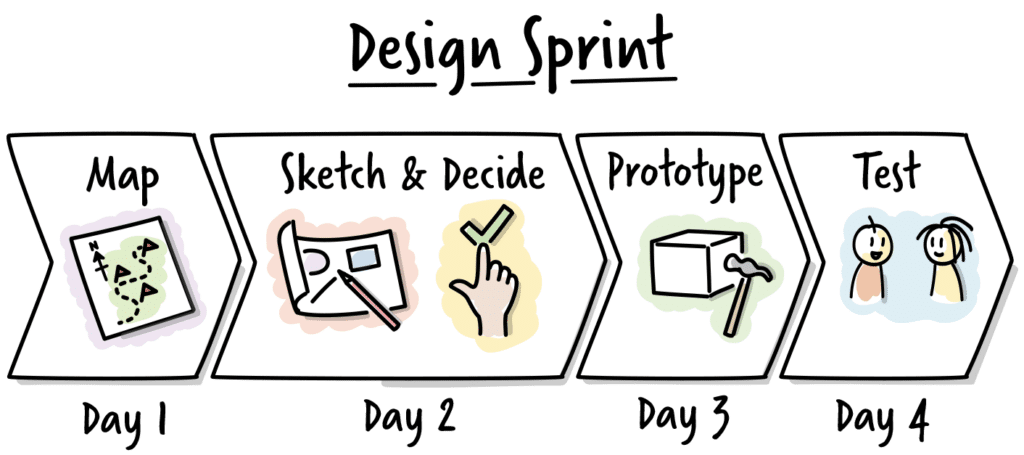Like most UX designers, reading through the book Design Sprint by Jake Knapp was an inspiring look into how a lean, agile workforce could be done. I aligned with the philosophy of constant iteration and the ability to unite a team into a single focus for each sprint of effort. I even convinced the company I was working with at the time to pay for a $1,500 masterclass for me to attend to better learn how to teach and run design sprints at my 9-5.
Unfortunately, the conclusion I came to is that we couldn’t do it.

The biggest hurdle with the Design Sprint methodology is that the workflow is micro-managed. It takes the willingness of the organization to allow 5-7 people to free their calendars for an entire week to focus on a specific problem. These team members won’t be able to attend their usual meetings or answer their emails in a timely fashion.
Long story short, the philosophy of a design sprint can’t go from the bottom up. It has to already have the buy-in from relevant stakeholders or it won’t happen. And while some tactics from the design sprint can absolutely be incorporated into a designer’s workflow, corporate environments are too great a friction point for a Design Sprint to make sense.
